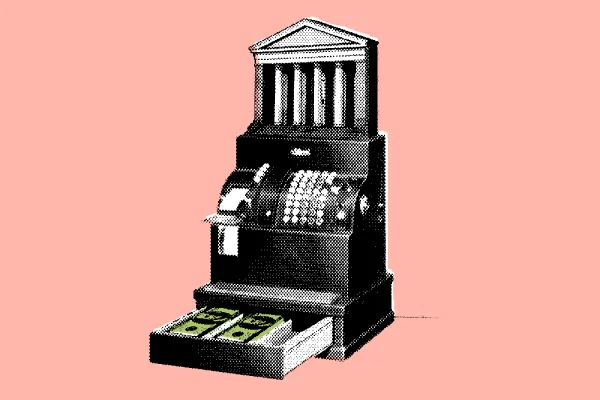Early one November morning on MSNBC’s Morning Joe, New York City Police Commissioner James O’Neill and host Joe Scarborough (an ex-congressman) were discussing a surprising outcome of Donald Trump’s election on city life: traffic.
The situation around Trump Tower — in the heart of Manhattan on Fifth Avenue and 57th Street — was “extremely challenging,” the commissioner said. Onerous truck restrictions made deliveries near-impossible. An entire crosstown block was shut. At least one lane of Fifth Avenue — a major artery in one of the world’s busiest metropolises — had been taken over as a security perimeter for the entrance to the president-elect’s Tower, atop which sits the populist’s opulent penthouse. “Fifty-seventh is probably the slowest street in New York City,” O’Neill admitted, but expressed little concern for the resilient Manhattan pedestrian. “If Fifth Avenue becomes too crowded, they’ll walk down Sixth or Madison.”
The commissioner — understandably preoccupied with massive daily protests (slogans included “Not MY President,” “This Pussy Grabs Back,” “Can’t Build a Wall, Hands Too Small”) — overlooked those people who simply couldn’t avoid the Trump zone. Tiffany & Co. and Starbucks reside beside and within Trump Tower, respectively, and employees still had to show up for work. Pumpkin spice lattes and $60,000 engagement rings don’t sell themselves. Scantily clad young workers of Abercrombie & Fitch began greeting guests across the street at 10:00 a.m. sharp.
And for once, income bracket offered no out from this inconvenience. Asset management employees were uniquely impacted by the president-elect’s housing situation — few streets in Manhattan, or the world, are as laden with money managers as the “slowest street in New York City.”
If one were to stand under the gold lettering at Trump Tower’s entrance, drop a pin on Google Maps, and search for “asset management,” one would discover that hundreds of billions, if not trillions, in assets flow through that one-block radius. To the north are Taurus Asset Management and Pine River Capital Management. To its south, Corsair Capital and Berens Capital Management. Across the road, Pinnacle Asset Management. And around the corner, at 9 West 57th, is a gold mine. The Solow Building houses more mega–investment firms than any other single structure in New York: KKR, Apollo Global Management, Silver Lake Partners, Tiger Global Management, and Och-Ziff Capital Management round out an exhausting, if not exhaustive, list of tenants. Their only stroke of luck was that investors tend not to window-shop for core fixed-income products.
An entirely unscientific survey of these firms found little change from their preelection routine, beyond regular alerts for employees on planned protests and local congestion. What could they do? The companies weren’t moving, and neither, apparently, was Trump. First Lady–elect Melania and son Baron plan to stay in New York City for some time after the January inauguration, and the future president has indicated that the Tower will be a weekend home. Thus the unofficial policy from neighboring titans of finance: Grin and bear it.
If Trump sympathized with his local asset managers and baristas, he remained uncharacteristically silent on the subject. He did express strong, if bipolar, views on the vast protests taking place 58 stories below his perch. At 10:19 p.m. on November 10, Trump — via in-house policy organ Twitter — opined, “Just had a very open and successful presidential election. Now professional protesters, incited by the media, are protesting. Very unfair!” By the next morning he’d changed his mind, or had someone change it for him. “Love the fact that the small groups of protesters last night have passion for our great country. We will all come together and be proud!” he wrote. The protesters, professional or otherwise, did the same as the asset managers: They carried on.
Half a world away, a clever variation on this strategy was in use. Days after his flip-flop on the merits of picketing his building, Trump turned his online enthusiasm toward the Chinese. “Did China ask us if it was OK to devalue their currency (making it hard for our companies to compete), heavily tax our products going into their country (the U.S. doesn’t tax them) or to build a massive military complex in the middle of the South China Sea? I don’t think so!” he wrote on December 4. The Chinese had registered muted complaint when Trump broke with 35 years of government policy and accepted a call from the president of Taiwan following his victory, but in response to his Twitter bait they did nothing. Regional commentators, polled during an early December visit to the area, believed that Trump’s rhetorical flourishes masked an inability to accomplish much globally. He was, they said, like a rich drunk uncle at Christmas: all fire and outrage, until he falls asleep on the couch and change falls out of his pockets. Then take his dessert.
As November turned to December on 57th Street, the security burden slowly lifted for investors and shopgirls alike. Protests had become less frequent and voluminous. Security barriers were in place. Traffic on Fifth Avenue once again flowed at its regular New York crawl. And due to a recent pronouncement from on high, a sliver of an opportunity revealed itself to the capital-rich residents of the Solow Building. Trump had recently announced, via Twitter (of course), that “legal documents are being crafted which take me completely out of business operations. The Presidency is a far more important task!” While few actually believed he would sell the crown jewel of real estate holdings, a glimmer of hope existed. On Twitter, as in life, President-elect Donald Trump is nothing if not capricious, and “KKR Tower” has a nice ring to it.





